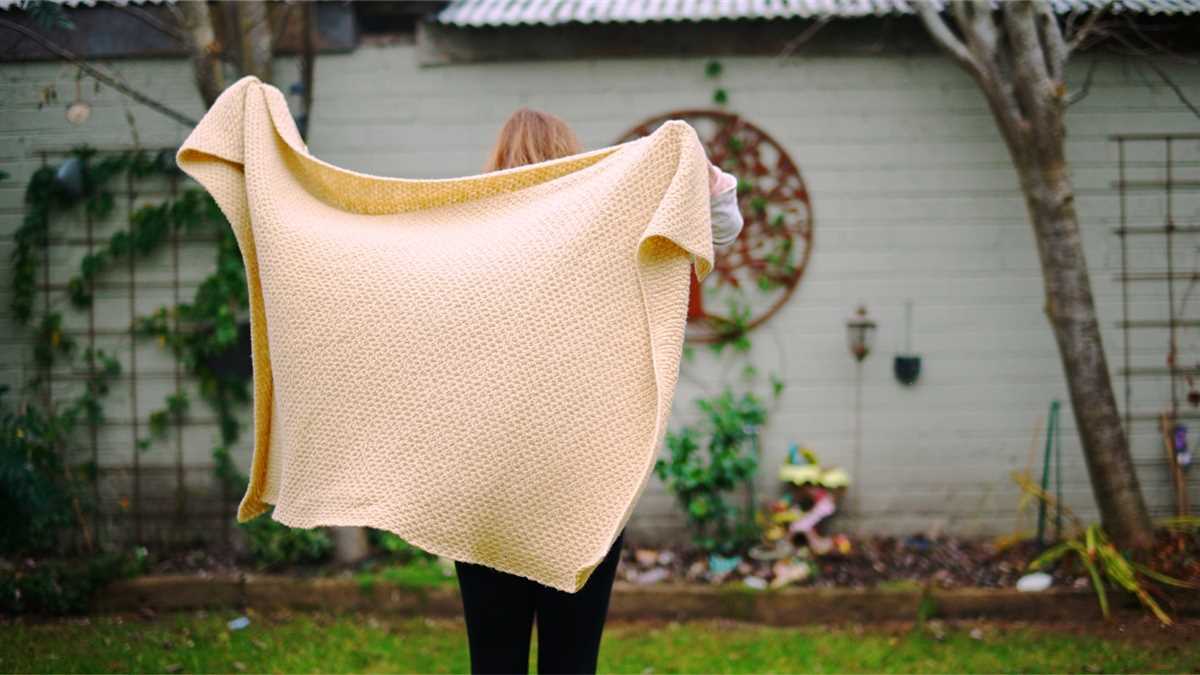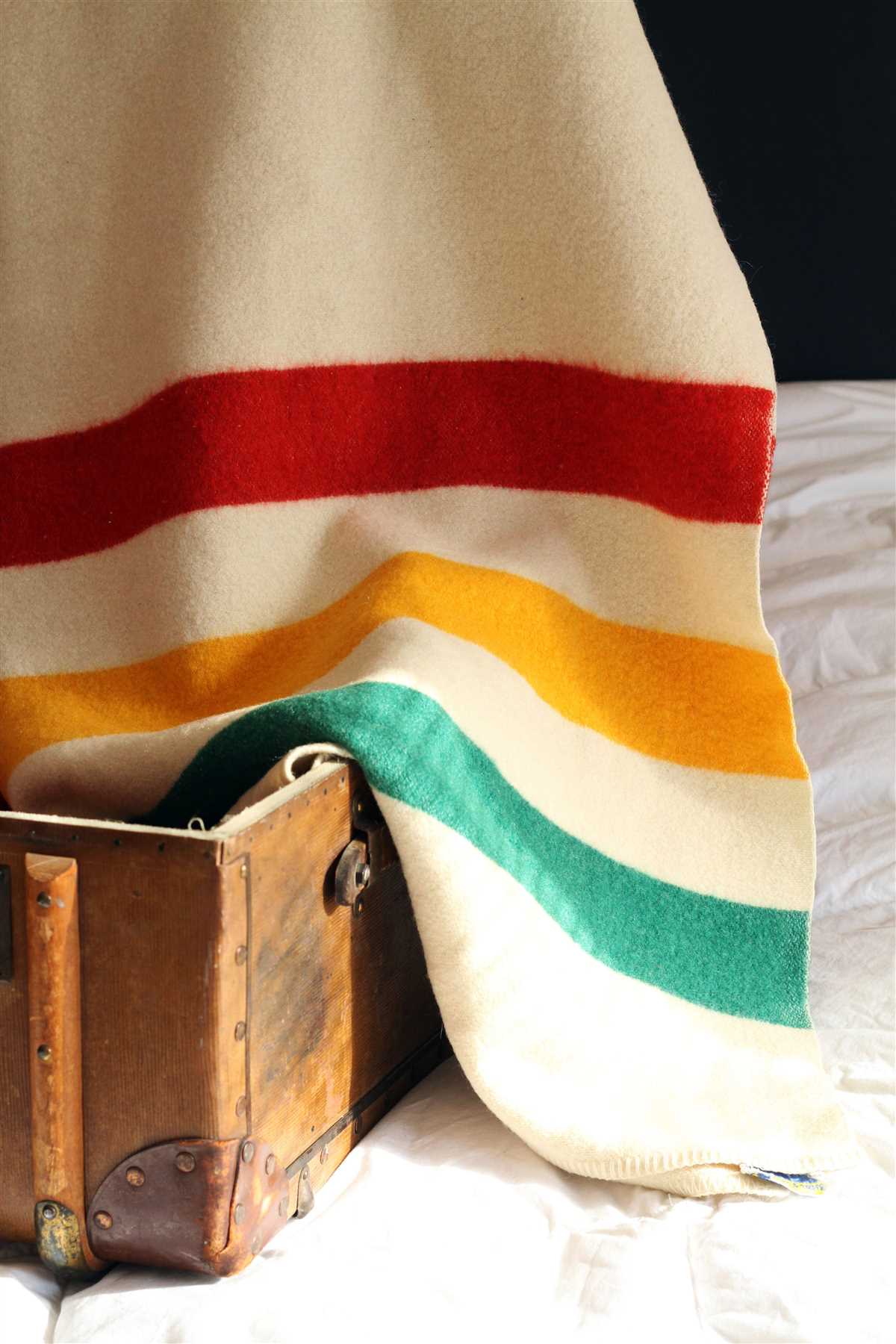




Wool blankets are not only warm and cozy, but they also add a touch of luxury to any home. However, cleaning these blankets can be a bit tricky if you don’t know the proper techniques. Wool is a delicate fabric and can easily shrink or become damaged if not washed correctly. Therefore, it’s important to follow a step-by-step guide to ensure your wool blanket stays soft, clean, and in great condition.
Step 1: Check the Care Label
Before washing your wool blanket, always check the care label for specific instructions. The care label will provide important information on whether the blanket can be machine washed, hand washed, or if it requires dry cleaning. Following the care instructions is crucial to avoid any damage or loss of quality.
Step 2: Pre-Treat Stains
If your wool blanket has any stains, it’s important to pre-treat them before washing. Use a gentle stain remover or mild detergent and gently dab the stained areas. Avoid rubbing the fabric vigorously, as this can damage the fibers. Allow the stain remover to sit on the stain for a few minutes before proceeding to the next step.
Step 3: Choose the Right Washing Method
Depending on the care label instructions, you can either machine wash or hand wash your wool blanket. If the care label allows machine washing, use a gentle cycle with cold water and a mild wool detergent. If hand washing is recommended, fill a sink or basin with lukewarm water and add a small amount of wool detergent.
Step 4: Wash and Rinse
When machine washing, place your wool blanket in the machine and select the appropriate settings. Make sure to only use cold water and avoid using any fabric softener or bleach. If hand washing, gently agitate the blanket in the soapy water, making sure to cover all areas. Rinse the blanket thoroughly with clean water until all the soap is removed.
Choosing the Right Detergent
When it comes to washing your wool blanket, it’s important to choose the right detergent. Using the wrong detergent can lead to damage or shrinking of the fibers. Here are some tips for selecting the right detergent for your wool blanket:
- Look for a gentle, wool-specific detergent: Wool requires a detergent that is specifically designed for delicate fabrics. Look for a gentle detergent that is free from harsh chemicals and additives.
- Avoid using regular laundry detergent: Regular laundry detergents often contain enzymes and other chemicals that can be too harsh for wool. These detergents can cause the fibers to become brittle or lose their softness.
- Check the pH level: Wool has a slightly acidic pH, so it’s important to choose a detergent with a pH level that is close to neutral (around 7). This will help to maintain the natural pH balance of the wool fibers.
- Consider using a wool wash: Wool washes are specifically formulated for wool and other delicate fabrics. They are designed to gently clean and protect the fibers without causing any damage or shrinking.
- Read customer reviews: Before purchasing a detergent, take the time to read customer reviews. Look for feedback from people who have used the detergent on wool blankets to ensure that it is safe and effective.
By choosing the right detergent for your wool blanket, you can ensure that it is properly cleaned without causing any damage to the delicate fibers. Remember to always follow the manufacturer’s instructions when using any detergent and test a small, inconspicuous area of the blanket before washing the entire thing to ensure that there are no adverse effects.
Prepping Your Wool Blanket
Before you start washing your wool blanket, it’s important to properly prepare it to ensure the best results and avoid any damage. Follow these steps to properly prep your wool blanket:
1. Read the Care Instructions

Every wool blanket comes with care instructions provided by the manufacturer. Make sure to read and follow these instructions to avoid any potential damage. The care instructions will typically provide guidance on things like water temperature, drying methods, and whether or not the blanket can be machine washed.
2. Check for Stains or Spots
Inspect your wool blanket for any stains or spots before washing. If you spot any, it’s best to treat them before washing. Follow the manufacturer’s guidelines for stain removal or try using a gentle stain remover specifically designed for wool fabrics.
3. Shake or Brush off Excess Dirt
Take your wool blanket outside and give it a good shake to remove any loose dirt or debris. If there are stubborn dirt particles or pet hair, you can use a soft-bristle brush or a lint roller to gently brush them off.
4. Secure Loose Threads
Inspect the blanket for any loose threads or frayed edges. If you find any, use a small pair of scissors to carefully trim them off. This will help prevent further unraveling or damage during the washing process.
5. Close Zippers or Fasten Buttons

If your wool blanket has any zippers or buttons, make sure to close them before washing. This will help protect the blanket and prevent any damage to the zippers or buttons.
6. Empty Pockets

If your wool blanket has pockets, make sure to empty them before washing. Leaving items in the pockets can cause damage to both the blanket and the items themselves.
7. Use a Laundry Bag or Pillowcase
To further protect your wool blanket during the washing process, consider placing it in a laundry bag or a pillowcase. This will help prevent any possible snagging or tangling with other items in the washing machine.
Now that you’ve properly prepped your wool blanket, you’re ready to move on to the next step: washing it.
Gently Hand Washing Your Wool Blanket
Washing your wool blanket by hand is the gentlest way to clean it, helping to preserve its quality and prolong its lifespan. Follow these steps to properly hand wash your wool blanket:
- Fill a clean bathtub or basin with lukewarm water. Avoid using hot water, as it can cause the wool to shrink.
- Add a small amount of mild wool-friendly detergent to the water. Avoid using harsh detergents or bleaches, as they can damage the wool fibers.
- Gently submerge the wool blanket into the water, making sure it is fully immersed.
- Use your hands to gently agitate the water and the blanket. Avoid using excessive force or scrubbing, as this can cause the wool to stretch or become misshapen.
- Allow the blanket to soak in the soapy water for about 10-15 minutes. This will help to loosen any dirt or stains.
- Drain the soapy water from the bathtub or basin.
- Rinse the blanket thoroughly with clean lukewarm water. Ensure that all the detergent is removed from the wool fibers.
- Gently press down on the blanket to remove excess water. Avoid wringing or twisting the wool, as this can cause it to become misshapen.
- Transfer the blanket to a clean, dry towel and roll it up like a burrito. This will help to absorb the remaining moisture from the wool fibers.
- Unroll the blanket from the towel and lay it flat on a clean, dry surface, away from direct sunlight or heat sources. Reshape the blanket if necessary.
- Allow the wool blanket to air dry completely. This may take several hours or even overnight.
Following these steps will ensure that your wool blanket is gently and effectively cleaned by hand, leaving it fresh, soft, and ready to provide warmth and comfort for years to come.
Drying Your Wool Blanket

Properly drying your wool blanket after washing is crucial to maintain its softness and shape. Here’s how you can do it:
- After removing your wool blanket from the washing machine, gently squeeze out the excess water. Avoid wringing or twisting the blanket, as this can cause damage to the fibers.
- Spread out a clean, dry towel on a flat surface and place your wool blanket on top of it. Roll the towel and blanket together to absorb the remaining moisture from the blanket. Repeat this step with a second dry towel if necessary.
- Once the excess water has been absorbed, carefully unroll the blanket and lay it flat on a drying rack or a clean, dry surface. Make sure the blanket is spread out evenly to allow for proper air circulation.
- Avoid exposing your wool blanket to direct sunlight or heat sources such as radiators, as this can cause the fibers to become brittle and fade in color. Instead, choose a well-ventilated area with indirect light for drying.
- Periodically flip and rotate your wool blanket to ensure even drying. This will also help prevent any wrinkles or creases from forming.
- If you’re in a hurry, you can use a fan or set the wool blanket on the lowest heat setting of a hairdryer to speed up the drying process. However, be cautious not to place the hairdryer too close to the blanket, as this can damage the fibers.
- Allow your wool blanket to air dry completely before storing or using it. This may take several hours or even a full day, depending on the thickness and size of the blanket.
By following these steps, you can ensure that your wool blanket maintains its softness, shape, and color for years to come.
Storing Your Wool Blanket Properly
Proper storage of your wool blanket is essential to maintain its quality and prolong its lifespan. Follow these steps to ensure your wool blanket stays in the best possible condition while it’s not in use.
Clean Before Storing

Prior to storing your wool blanket, make sure it is clean. Follow the proper washing instructions provided by the manufacturer or refer to our guide on how to wash a wool blanket. Storing a dirty or stained blanket can result in odors, stains, and potential damage.
Avoid Moisture
Moisture is one of the biggest enemies of wool. Keep your wool blanket away from damp areas such as basements or attics prone to leaks. Moisture will not only lead to mold and mildew growth, but it can also cause the fibers to weaken and become brittle.
Protect from Pests
Wool is a natural animal fiber and can attract pests such as moths. To protect your wool blanket from moth damage, consider using moth repellents or storing it in airtight containers. Cedar blocks, lavender sachets, or mothballs can help keep moths away.
Store in a Cool, Dry Place
Avoid storing your wool blanket in areas with extreme temperatures or direct sunlight. Prolonged exposure to heat or sunlight can cause the colors to fade and the fibers to break down. Instead, choose a cool, dry place like a linen closet or under-bed storage.
Avoid Hanging
While it may be tempting to hang your wool blanket, it’s best to avoid hanging it for extended periods of time. Hanging a heavy wool blanket can cause the fibers to stretch and lose their shape over time.
Fold or Roll

Instead of hanging, fold or roll your wool blanket for storage. This will help preserve the shape and prevent any unnecessary strain on the fibers. If folding, try to keep the folds even and avoid creasing the blanket too tightly.
Avoid Plastic Bags

Avoid storing your wool blanket in plastic bags or containers that do not allow proper air circulation. Plastic can trap moisture and result in mildew growth. Instead, opt for breathable fabric storage bags or use acid-free tissue paper to protect the blanket.
Check Regularly
Periodically check on your stored wool blanket to ensure it remains in good condition. Look for any signs of pests, mold, or damage. If necessary, take proper measures to address any issues before they become more severe.
By following these guidelines, you can properly store your wool blanket and ensure it stays in excellent condition for many years to come. Remember, proper storage is just as important as proper cleaning in maintaining the quality of your wool blanket.
FAQ
Can I wash a wool blanket in a washing machine?
Yes, you can wash a wool blanket in a washing machine, but it’s important to use a gentle cycle and cold water to protect the wool fibers.
Do I need to use a special detergent for washing a wool blanket?
Yes, it’s recommended to use a detergent specially designed for wool or other delicate fabrics. Regular detergents can be too harsh and damage the wool fibers.
How often should I wash my wool blanket?
It depends on how frequently you use the blanket and how dirty it gets. In general, it’s recommended to wash wool blankets every few months to keep them clean and fresh.
Can I dry my wool blanket in a dryer?
No, it’s not recommended to dry a wool blanket in a dryer as it can cause shrinkage and damage the fibers. It’s best to air dry the blanket by laying it flat on a clean, dry surface.
What should I do if my wool blanket gets stained?
If your wool blanket gets stained, it’s important to treat the stain as soon as possible. Gently blot the stain with a clean cloth or sponge soaked in a mild detergent solution, then rinse it with cold water. Avoid rubbing the stain, as it can cause the stain to spread or damage the fibers.
Why is it important to wash a wool blanket properly?
Properly washing a wool blanket is important to maintain its quality, prevent shrinkage, and remove dirt and odour while avoiding damage.
Can I machine wash a wool blanket?
No, it is not recommended to machine wash a wool blanket as it can cause shrinkage and damage the fabric. It is best to hand wash it.












